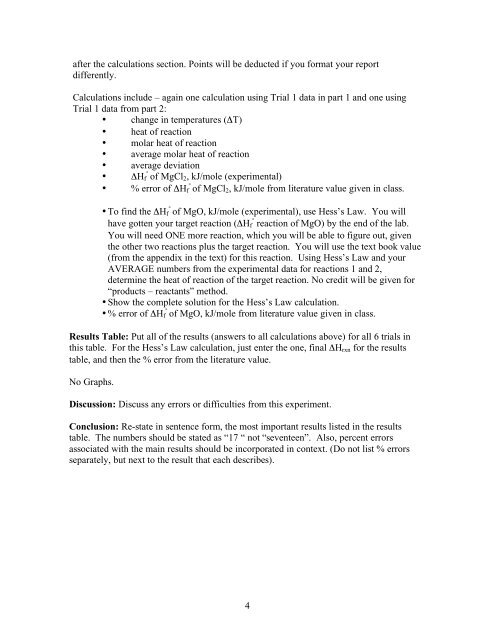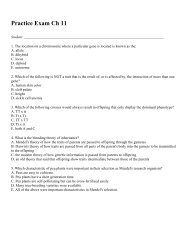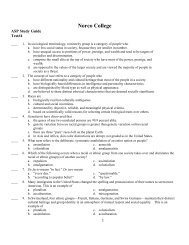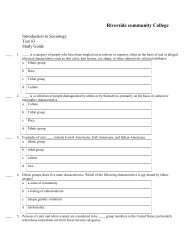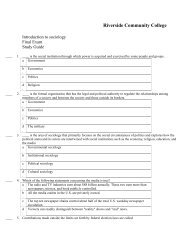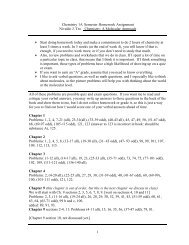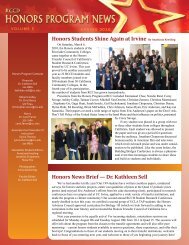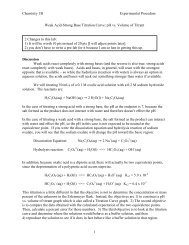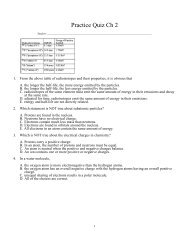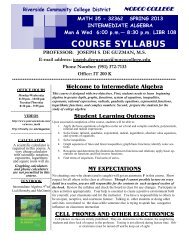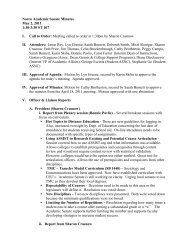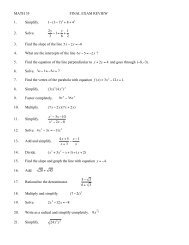1 Hess's Law Lab: Determine the Heat of Formation of Magnesium ...
1 Hess's Law Lab: Determine the Heat of Formation of Magnesium ...
1 Hess's Law Lab: Determine the Heat of Formation of Magnesium ...
- No tags were found...
Create successful ePaper yourself
Turn your PDF publications into a flip-book with our unique Google optimized e-Paper software.
after <strong>the</strong> calculations section. Points will be deducted if you format your reportdifferently.Calculations include – again one calculation using Trial 1 data in part 1 and one usingTrial 1 data from part 2:• change in temperatures (T)• heat <strong>of</strong> reaction• molar heat <strong>of</strong> reaction• average molar heat <strong>of</strong> reaction• average deviation• H f°<strong>of</strong> MgCl 2 , kJ/mole (experimental)• % error <strong>of</strong> H f°<strong>of</strong> MgCl 2 , kJ/mole from literature value given in class.• To find <strong>the</strong> H f°<strong>of</strong> MgO, kJ/mole (experimental), use Hess’s <strong>Law</strong>. You willhave gotten your target reaction (H f ° reaction <strong>of</strong> MgO) by <strong>the</strong> end <strong>of</strong> <strong>the</strong> lab.You will need ONE more reaction, which you will be able to figure out, given<strong>the</strong> o<strong>the</strong>r two reactions plus <strong>the</strong> target reaction. You will use <strong>the</strong> text book value(from <strong>the</strong> appendix in <strong>the</strong> text) for this reaction. Using Hess’s <strong>Law</strong> and yourAVERAGE numbers from <strong>the</strong> experimental data for reactions 1 and 2,determine <strong>the</strong> heat <strong>of</strong> reaction <strong>of</strong> <strong>the</strong> target reaction. No credit will be given for“products – reactants” method.• Show <strong>the</strong> complete solution for <strong>the</strong> Hess’s <strong>Law</strong> calculation.• % error <strong>of</strong> H f°<strong>of</strong> MgO, kJ/mole from literature value given in class.Results Table: Put all <strong>of</strong> <strong>the</strong> results (answers to all calculations above) for all 6 trials inthis table. For <strong>the</strong> Hess’s <strong>Law</strong> calculation, just enter <strong>the</strong> one, final H rxn for <strong>the</strong> resultstable, and <strong>the</strong>n <strong>the</strong> % error from <strong>the</strong> literature value.No Graphs.Discussion: Discuss any errors or difficulties from this experiment.Conclusion: Re-state in sentence form, <strong>the</strong> most important results listed in <strong>the</strong> resultstable. The numbers should be stated as “17 “ not “seventeen”. Also, percent errorsassociated with <strong>the</strong> main results should be incorporated in context. (Do not list % errorsseparately, but next to <strong>the</strong> result that each describes).4


